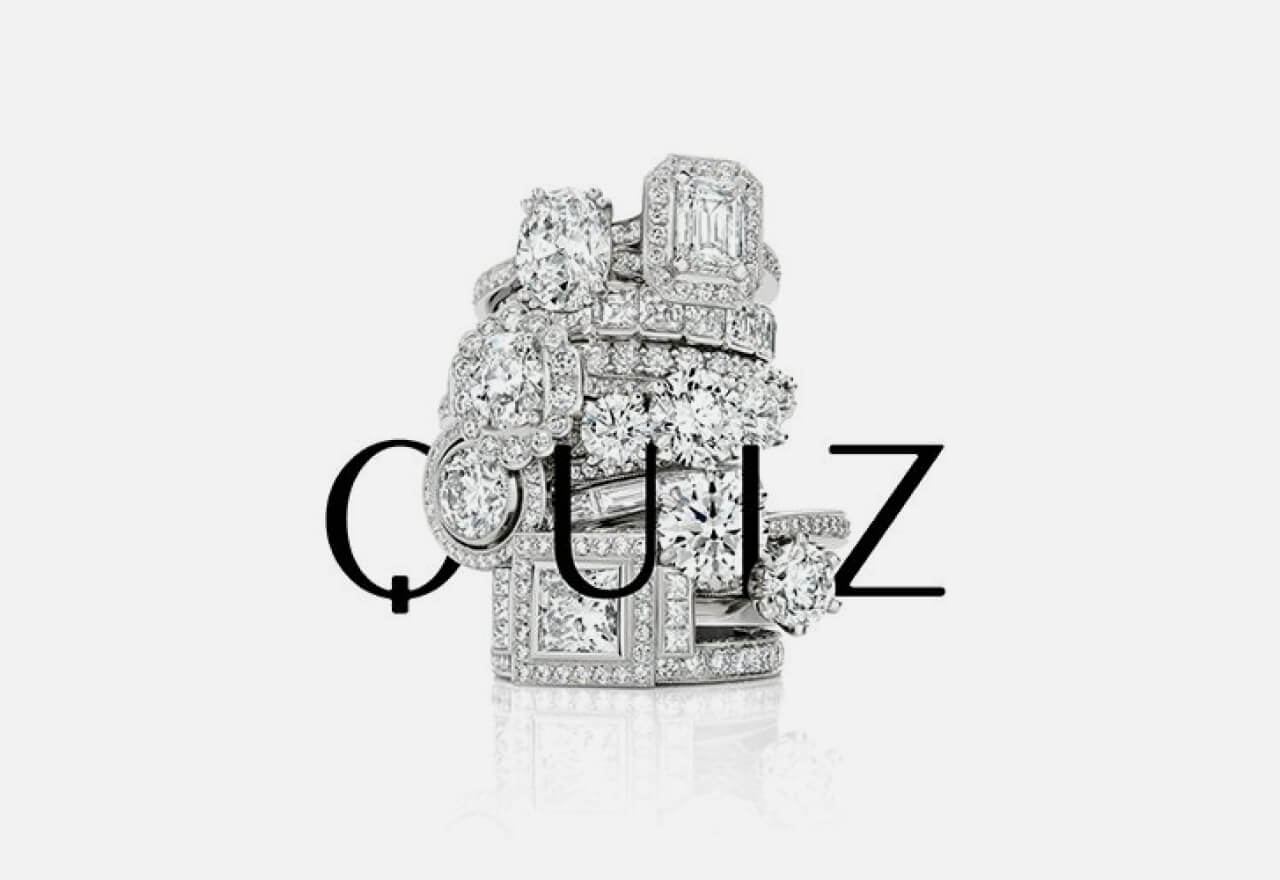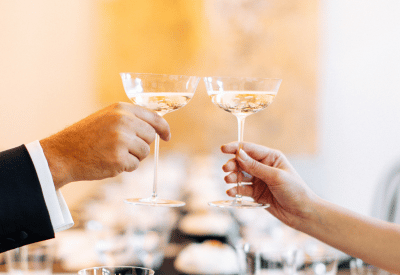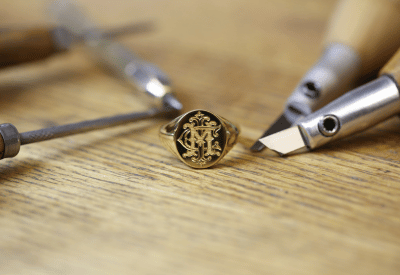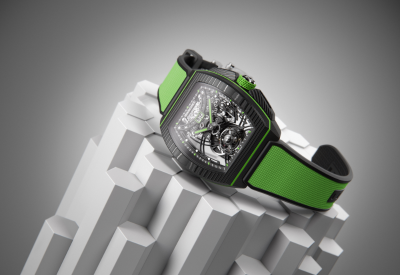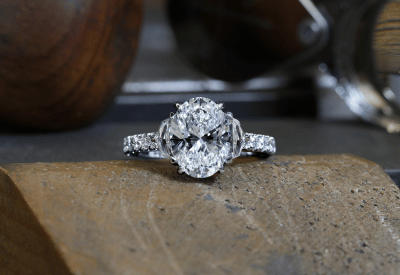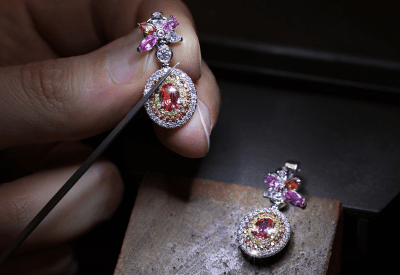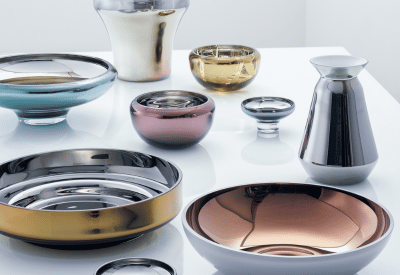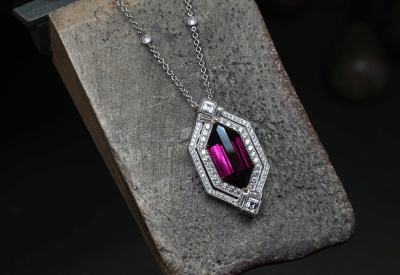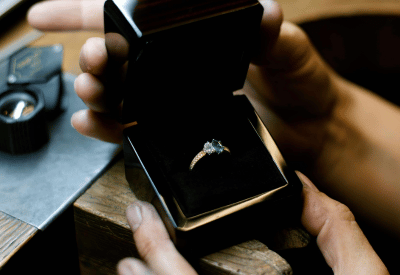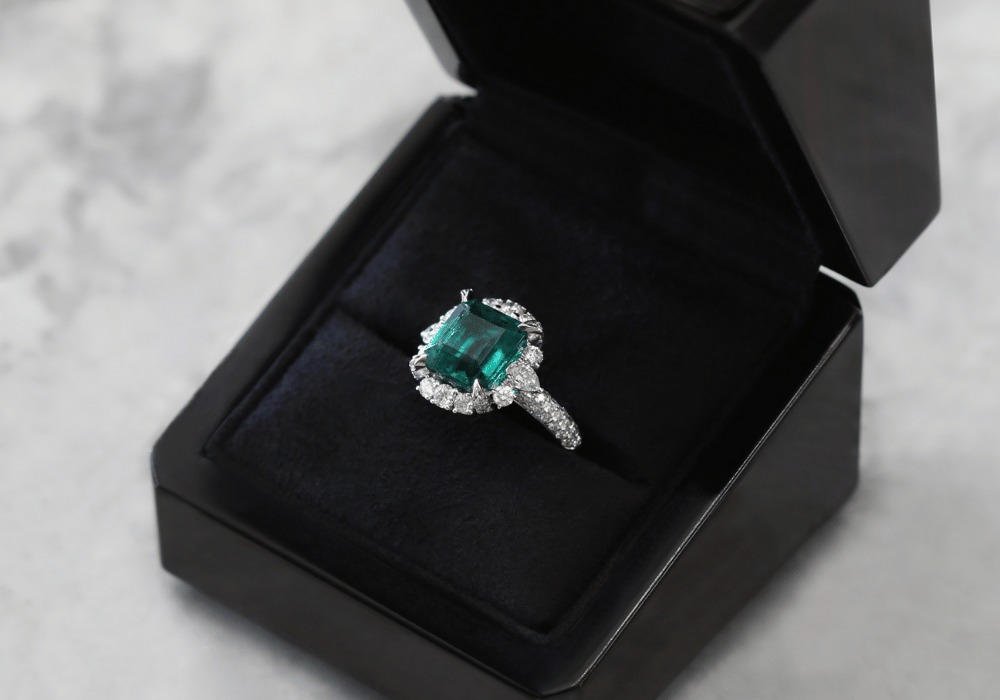diamond or gemstone engagement ring?
Diamonds are universally popular for engagement rings and jewellery of all types, but they are certainly not the only option. Discover a world of coloured gemstones that can be used alone or in conjunction with diamonds. This is our guide to the gemstone engagement ring.
The Emerald
Recognised to be one of the world’s four most precious stones, alongside sapphires, diamonds and rubies; the emerald is a highly valued gem. The largest producer of emeralds is Colombia, providing more than 50 percent of the world’s production.
A variety of mineral called beryl, emeralds obtain their green colouring from small amounts of chromium or vanadium. The most prized emeralds are a tone that is not too dark, with a high transparency, and a vivid saturation of bluish green to pure green. A hue that is too blue or yellow is considered to be a different variety of beryl and its value will drop. When shopping for the perfect emerald, another quality to look out for is the clarity of the stone. Gemstone clarity is based on the prevalence of internal inclusions or external blemishes. Whilst diamonds are evaluated using a 10X magnification, emerald clarity is graded with the naked eye.
Eye-clean emeralds are incredibly rare and more often than not, an emerald without any inclusions at all is likely to be synthetic.
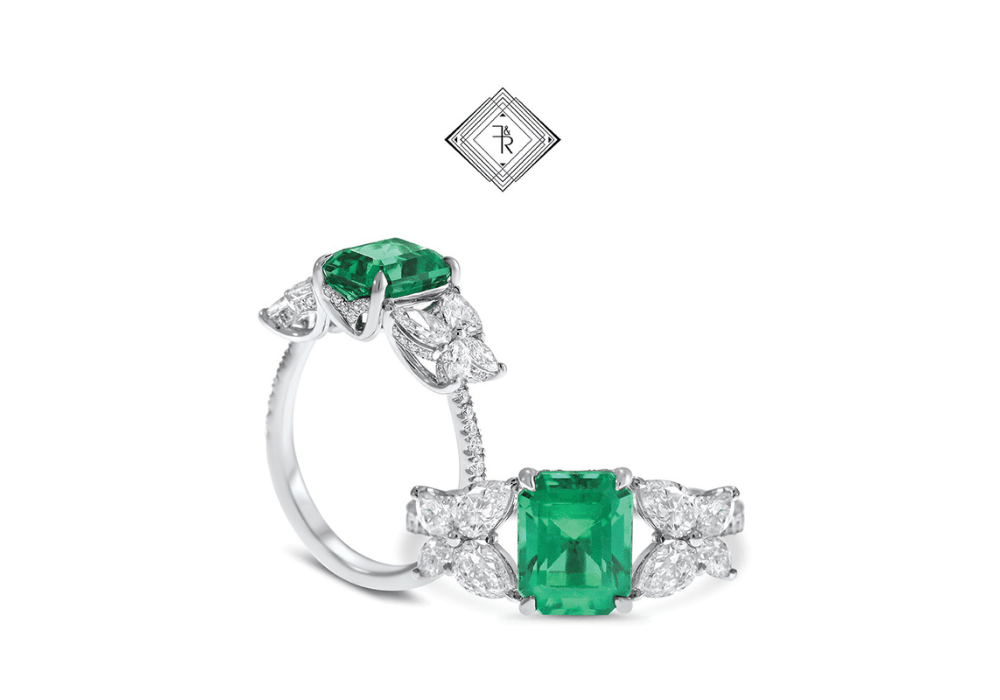
The Emerald expert tips
Emeralds are an 8 on Moh’s scale of mineral hardness, a ranking gauge that characterises the scratch resistance of various minerals. While this is a high score, the proliferation of internal inclusions in the emerald leads the stone’s toughness and durability to be less than sapphires or diamonds.As the majority of emeralds are fracture-filled, the stone is particularly sensitive to chemicals and ultrasonic cleaning. The safest way to clean an emerald is with warm, soapy water.
Due to its sensitivity, white gold rings that require a rhodium plate renewal every few years can damage the quality of the emerald. Opt for platinum or palladium settings, which are high-quality alternatives to white gold.
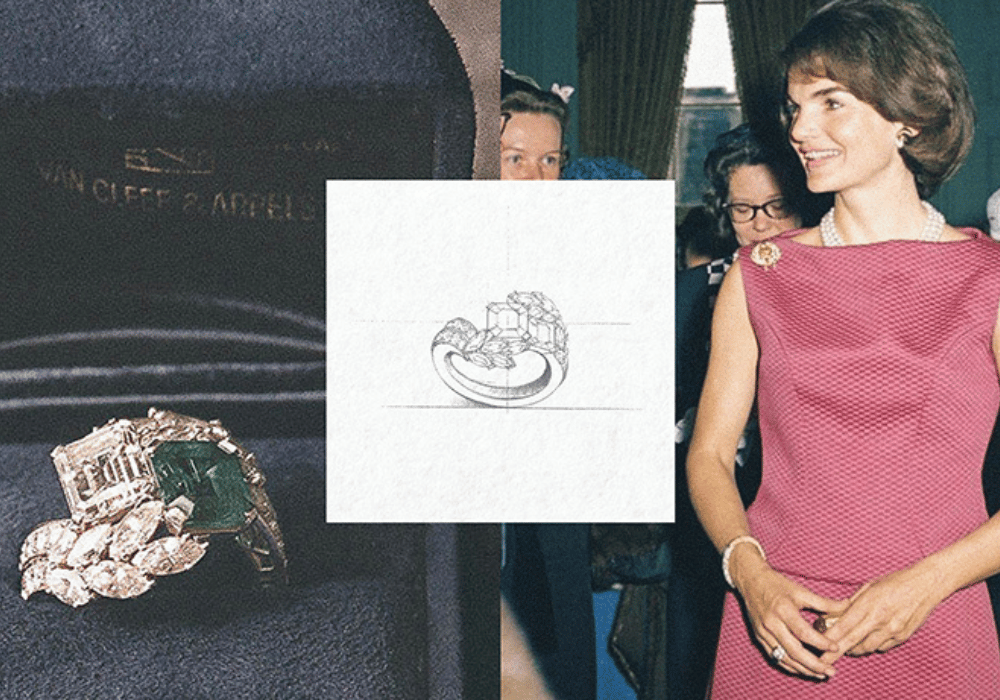
Jackie Kennedy's Emerald gemstone engagement ring
Keeping his fiancé’s love of emeralds in mind, John F. Kennedy commissioned Paris-based jewellers Van Cleef & Arpels to create Jackie Kennedy’s 2.88-carat diamond and 2.84ct emerald ring. At first, the ring was edged with tapered baguettes but it was remounted soon after the wedding. The baguettes were replaced with round, brilliant and marquise cut diamonds, totalling 2.12ct.
![]() The sapphire
The sapphire
Sapphires derive from the mineral corundum, and can primarily be found in Kashmir, Burma and Sri Lanka. Corundum itself is not very rare, but gem-quality corundum is extremely rare, which means that good quality sapphires are hard to find. Heat-treating sapphires is a standard industry procedure, ensuring the optimisation of both the colour and clarity of the gem. It is possible to source sapphires that have not been heat-treated and still exhibit all the qualities of a perfect sapphire. However, these gems are rare and sold at a premium.
The cut of the sapphire is another factor that will impact the value of the gemstone. Experienced jewellers will give each sapphire a personalised cut to maximise its beauty. Light blue stones should be cut deeper to add intensity and dimension. A dark sapphire should be shallowly cut, to allow a higher density of light to reflect inside the gemstone.

The sapphire expert tips
One method to test the quality of a sapphire’s cut is through tilting the stone back and forth in the sunlight. Ideally, it should produce bright colour flashes as it moves, with no dull spots.Sapphires are best viewed under natural light, as UV light illuminates the true colour of the sapphire. Colour is the most important influence in a blue sapphire’s value. The most desirable colour is a rich cornflower blue that is neither too dark nor too ‘inky’. All sapphires will display secondary hues when exposed to UV light. The most desirable secondary hues are violet and purple followed by white, less desirable secondary hues are grey, green and yellow.
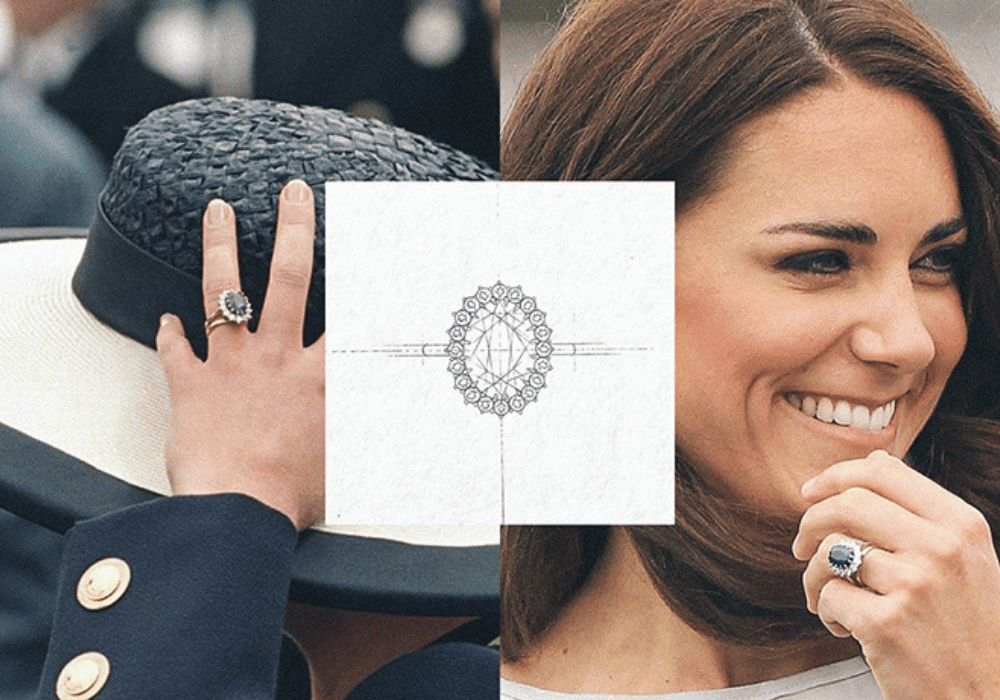
Catherine's & Diana's sapphire gemstone engagement ring
Catherine, Duchess of Cambridge’s sapphire and diamond halo ring is not only a stunning piece of jewellery, but is also a family heirloom. Originally owned by the late Princess Diana, the ring was created by the former Crown Jeweller Garrard & Co and consists of 14 diamonds elegantly surrounding a blue, 18-carat oval Ceylon sapphire, set in white gold. While Diana’s ring selection was controversial, as she decided against having one custom made, the ring has since increased in popularity, reminding admirers of Diana’s timeless sense of style.
The Ruby
A ruby is a form of a mineral named corundum, just like the sapphire. The only distinguishing factor between rubies and sapphires is colour, as other than red, all other corundum colours (including light pink) are sapphires. Colour is also the most important measure of value for the ruby, the general rule being; the stronger the colour, the better the stone.Colour intensity is best measured using three determiners, hue, tone and saturation. Hue refers to where the ruby falls in the colour spectrum. A ruby will always have secondary colours that show when the stone flashes. Purple or blue are sought-after secondary colours as they make the ruby appear a richer red.
Tone indicates how light or dark the shade of red is, with premium rubies falling in the middle range, with a medium level of transparency. Saturation signifies colour depth. A well-saturated ruby will sometimes glow in UV light and will appear to be more vivid than a stone of a lesser saturation.
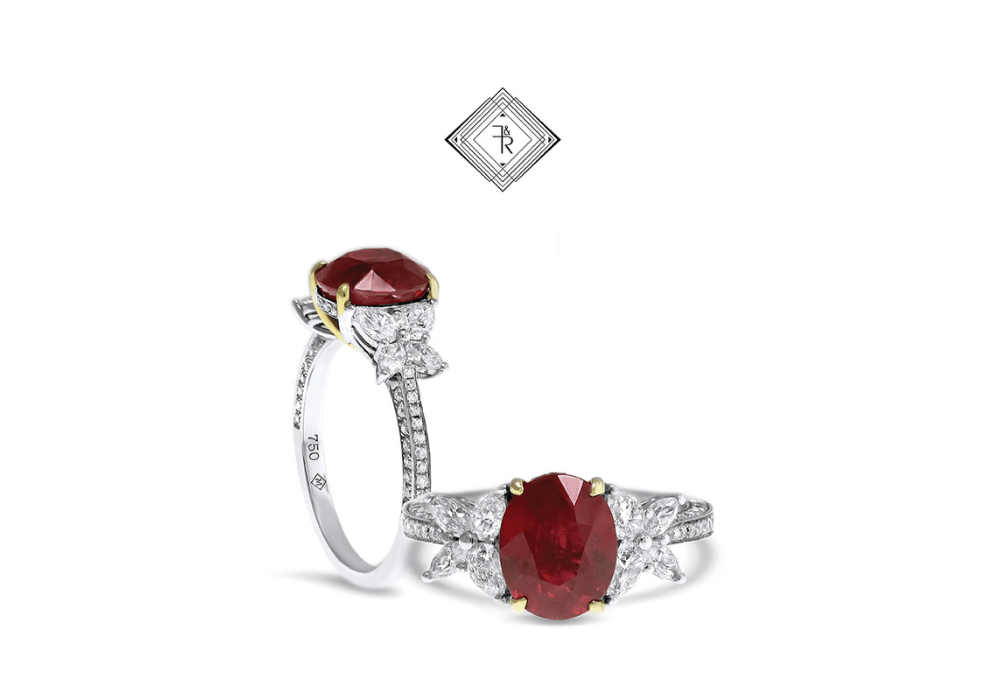
The ruby expert tips
Blemishes should not perturb shoppers, as all natural rubies have imperfections within them. This includes colour impurities and inclusions of Rutile needles known as silk. The silk is a lattice-like pattern inside the ruby that is responsible for star-like bursts of light. Inclusions can be beneficial as they help to distinguish natural ruby from synthetics. Furthermore, if the stone is cut correctly so that the light shines off certain points of the silk, the inclusions can increase the rarity and value of the stone.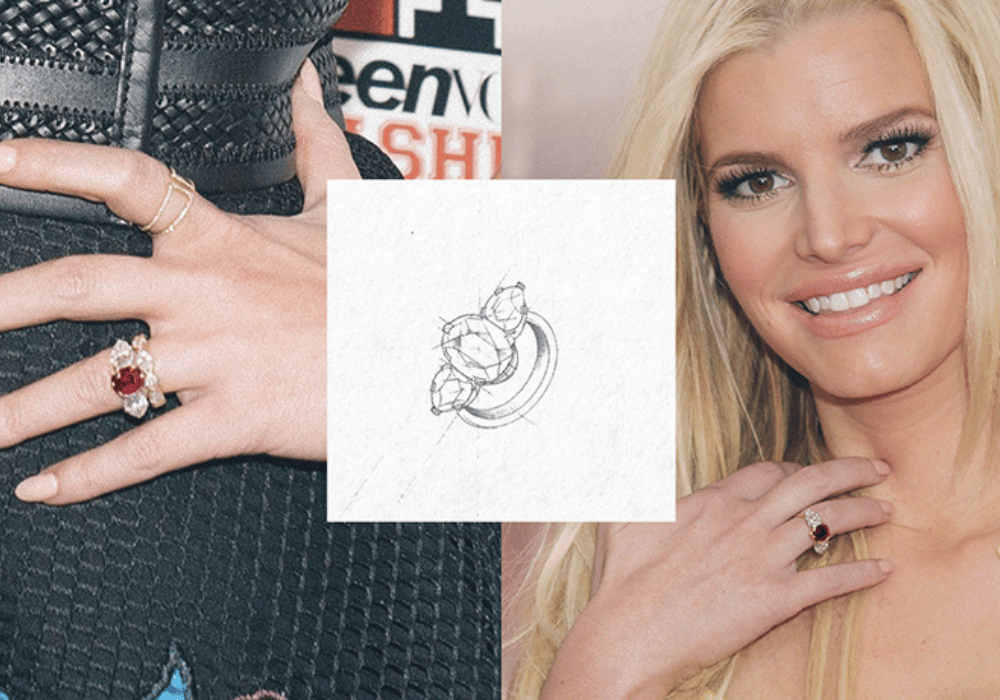
jessica Simpson's ruby gemstone engagement ring
Jessica Simpson’s 4-carat ruby ring, designed by Neil Lane, is from second husband and retired NFL player Eric Johnson. It features an oval-shaped ruby flanked by two pear-shaped diamonds and is a tribute to her July birthday. We look forward to meeting you, and working together to create a piece, and a moment, that will last forever.Send us an enquiry
Browse our engagement rings or book a consultation


